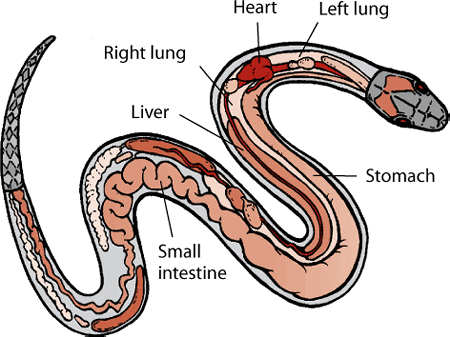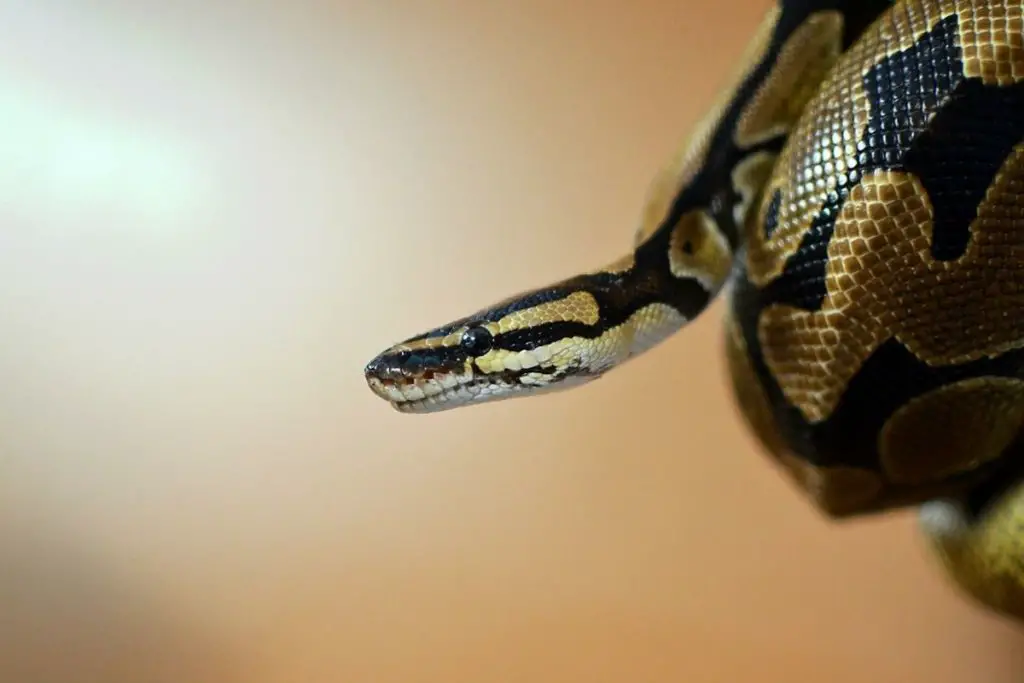All living things breathe, no matter how big or small they are, and snakes are no exception.
Snakes, like other reptiles, require a constant supply of oxygen to live. Snakes take in air through their nostrils or nasal passages. The snake’s tongue is not used for this intake of oxygen and instead serves primarily as a sensory tool.
However, you may have heard that snakes can spend time underwater, which implies that they can hold their breath. This is true.
So, how long can snakes hold their breath? Snakes can hold their breath for several minutes, but some species of snakes can hold their breath underwater for up to an hour. Some species of sea snakes have a lot of tiny blood vessels beneath their head’s skin that allows them to pull oxygen from water directly so they can stay longer.
How snakes breathe and hold their breath is actually a very fascinating topic on its own, and it shows just how unique snakes really are.
In this article, we are going to discuss how do snakes breathe, how they can hold their breath, and the fascinating ways some snake species can hold their breath for hours underwater without needing to come up for air.
Contents
How long can snakes hold their breath?

Snakes have an uncanny and completely surprising ability to hold their breath for a long period of time, which sometimes reach 2 hours or slightly more. It is determined by the kind of snake and how it’s feeling.
How long a snake can hold its breath will also depend on the natural habitat of the snake and its body.
Okay, first off, we need to discuss how do they even breathe.
How do snakes breathe?

The lungs of snakes are controlled through the movement of the muscles between their rips. Unlike us, snakes don’t have a diaphragm, so breathing is controlled through the contraction and relaxation of the muscles.
The respiratory function of the portion of a snake’s lung nearest its head is where oxygen exchange takes place. The air sac at the back of the lung, regardless of how big it is, is more resembling of an air sack. These sac portions resemble the insides of balloons more than they resemble lungs on the inside. There isn’t any movement between gas compartments, so it’s a one-way street for oxygen.
Snakes can exhale and inhale through their nose or mouth depending on how they’re positioned when stationary. However, snakes cannot breathe when in motion since the air would move past them quickly, which doesn’t allow any gas exchange to take place. In other words, if you see a snake has his mouth open, he’s probably about to strike.
How do snakes ‘hold their breath’?
The forked and long tongue of the snake is positioned just beneath its glottis, a small piece of cartilage that can close its windpipe.
Because of their anatomy, it’s actually the default of snakes to be in a state where it’s holding their breath unlike us. This kind of breathing is called ‘intermittent breathing.
How long can different snake types or species hold their breath?
Snakes vary in terms of how long they can hold their breath. Different species have different capabilities, but many factors beyond the snake’s environment impact this ability as well.
The average pythons are capable of holding their breath for up to 30 minutes. The Burmese python, for whom immersion is less crucial, can endure half an hour without breathing.
These numbers may seem impressive, but the most impressive of all is the sea kraits family of snakes. These snakes live most of their lives in the sea, and they can spend almost 80% of their time (and their whole life) underwater, holding their breath.
Sea Kraits are undefeated champions when it comes to holding their breath, though. They can hold their breath for up to two hours on a dive to hunt for food and then will only need 45 seconds of air time to get a large enough breath to dive back in the water for as long as they need to.
How long do sea snakes hold their breath (and how do they do it?)

I’m going to break the bad news: it’s most likely because of cheating. Some experts have discovered that a strange quirk in water snake anatomy can explain how they are able to stay submerged for so long without taking a breath.
Sea snakes have an abundance of blood vessels under the skin on their heads, and these vessels can extract oxygen from water, which allows them to breathe underwater in a strange way.
Factors that determine how long snakes can hold their breath
We understand that different types of snakes have varying capacities to hold their breath. But what determines how long a particular snake can stay underwater?
The same snake may be able to maintain its breath for longer at one time than it can at another.
Snakes are extremely responsive to their surroundings because they are reptiles that are cold-blooded and they can’t control and regulate – at least not to the same capacity of their warm-blooded counterparts – their blood pressure. This is also why snakes can’t go for long without heat, learn more here.
Snakes are known to hold their breath when it’s quite hot and will also breathe less when the temperature drops below a certain level, according to one research.
Snakes will also breathe more frequently when there’s more CO2 in the air, according to the same research.
Do Snakes hold their breath while they’re eating?
Snakes will typically hold their breath while they’re eating but not completely—and for good reason. Since swallowing a prey whole requires the snake to move a few muscles, they can’t completely hold their breath and will need oxygen throughout the process.
Can Ball Pythons hold their breath?

Ball pythons can hold their breath underwater for a few minutes without a problem, but since they can’t swim, most ball pythons don’t go completely in the water and will instead drop their heads underwater for several minutes before having to come up for air.
Conclusion
While all snakes have some ability to hold their breath underwater, how long they can do so varies greatly. Some species of sea snakes are able to extract oxygen from the water in a way that allows them to stay submerged for extended periods of time, but they must come up for air occasionally.
Different factors such as environment and how comfortable the snake is can also impact how long a snake can hold its breath.
There are many other factors that determine how long snakes stay underwater, but it ultimately varies from species to species and individual to individual.
That’s it for this article! I hope you found it informative. Before you go, make sure to also check out these guides to how long can snakes go without food and how long can snakes go without drinking water.
Related Questions
How long can snakes be underwater?
Some snakes can stay underwater for up to an hour, but most only stay submerged for a few minutes.
Do snakes have to come up for air?
All snakes must breathe air at some point, but how often they do so varies depending on the species and environment. Even sea snakes that have systems that imitate how gills work and can extract oxygen directly from the water will need to come up for air and can’t stay submerged than an hour or two at most.
Can sea snakes hold their breath?
Yes, many sea snakes are able to extract oxygen from the water and can stay submerged for extended periods of time.
Can Snakes breathe underwater?
Some sea snakes can breathe underwater in some way by allowing oxygen particles to pass through the skin of their heads and into their lungs, similar to how fish gills work.
What snake can hold its breath the longest?
Sea Kraits are the snakes that can hold their breath the longest as they can hold their breath underwater for up to two hours, although they do it by allowing the oxygen particles through their skin and into their body directly in the way that fish gills work, which means that they walk the line between holding their breath and breathing underwater.
Helpful Resources
How Snakes Work – Structure, Function and Behavior of the World’s Snakes by Harvey B. Lillywhite
Sea snakes’ strange heads may let them “breathe” underwater
The Effect of Body Temperature and CO₂ Breathing on Ventilation and Acid-Base Status in the Northern Water Snake Nerodia sipedon – Jay B. Dean and Ronald K. Gratz
If you like this article, please share it!

